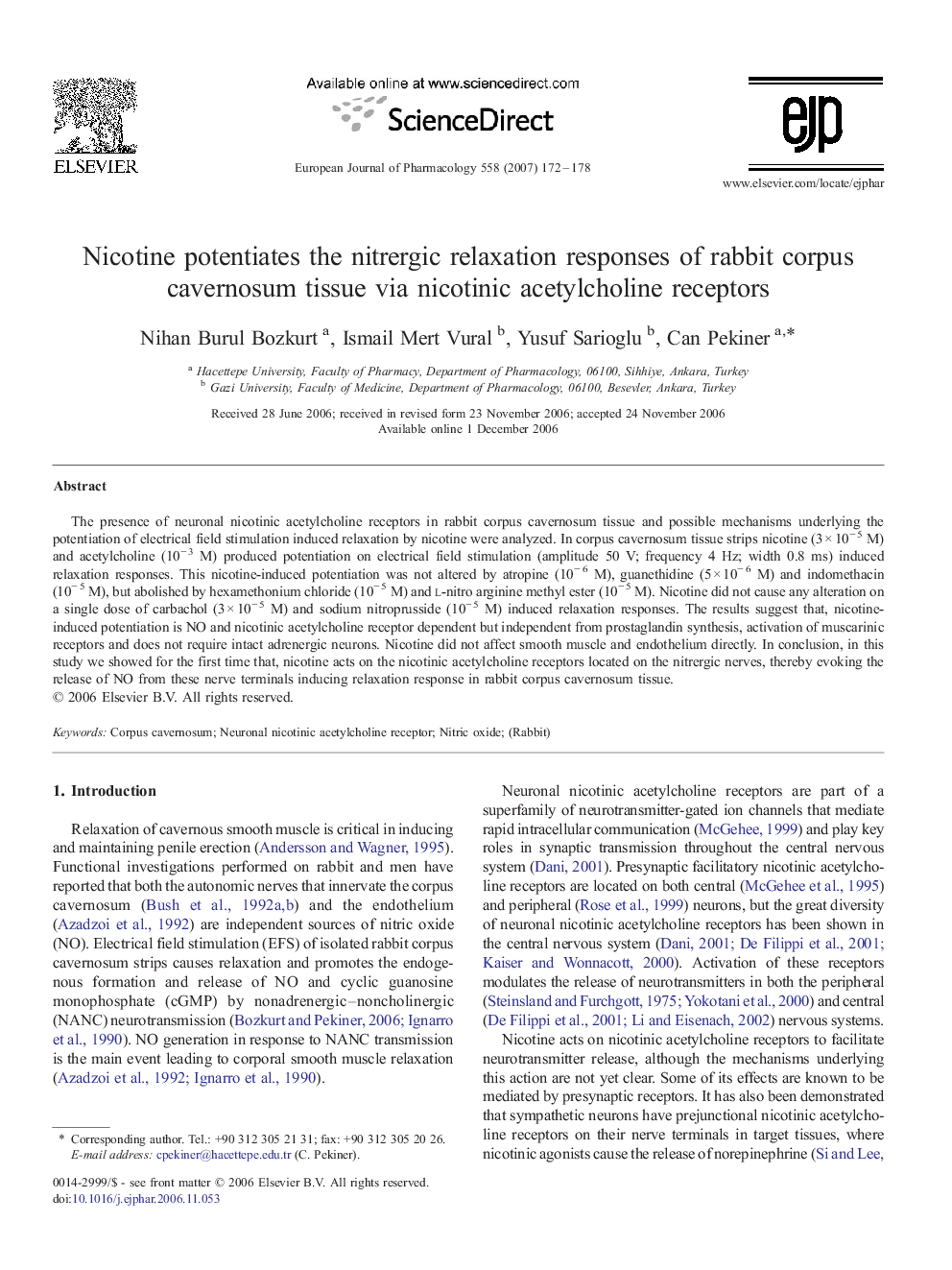| Article ID | Journal | Published Year | Pages | File Type |
|---|---|---|---|---|
| 2536494 | European Journal of Pharmacology | 2007 | 7 Pages |
Abstract
The presence of neuronal nicotinic acetylcholine receptors in rabbit corpus cavernosum tissue and possible mechanisms underlying the potentiation of electrical field stimulation induced relaxation by nicotine were analyzed. In corpus cavernosum tissue strips nicotine (3 Ã 10â 5 M) and acetylcholine (10â 3 M) produced potentiation on electrical field stimulation (amplitude 50 V; frequency 4 Hz; width 0.8 ms) induced relaxation responses. This nicotine-induced potentiation was not altered by atropine (10â 6 M), guanethidine (5 Ã 10â 6 M) and indomethacin (10â 5 M), but abolished by hexamethonium chloride (10â 5 M) and l-nitro arginine methyl ester (10â 5 M). Nicotine did not cause any alteration on a single dose of carbachol (3 Ã 10â 5 M) and sodium nitroprusside (10â 5 M) induced relaxation responses. The results suggest that, nicotine-induced potentiation is NO and nicotinic acetylcholine receptor dependent but independent from prostaglandin synthesis, activation of muscarinic receptors and does not require intact adrenergic neurons. Nicotine did not affect smooth muscle and endothelium directly. In conclusion, in this study we showed for the first time that, nicotine acts on the nicotinic acetylcholine receptors located on the nitrergic nerves, thereby evoking the release of NO from these nerve terminals inducing relaxation response in rabbit corpus cavernosum tissue.
Related Topics
Life Sciences
Neuroscience
Cellular and Molecular Neuroscience
Authors
Nihan Burul Bozkurt, Ismail Mert Vural, Yusuf Sarioglu, Can Pekiner,
